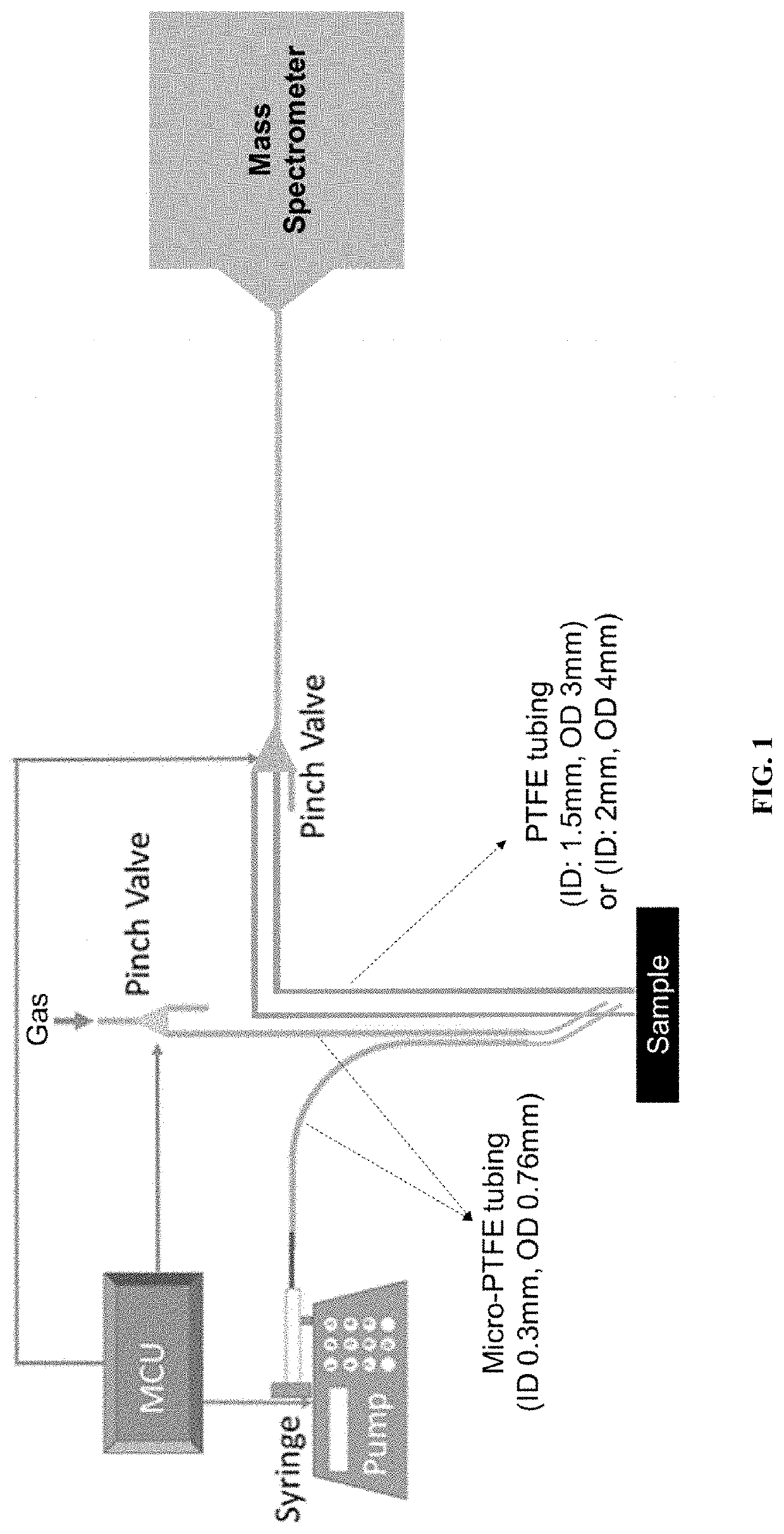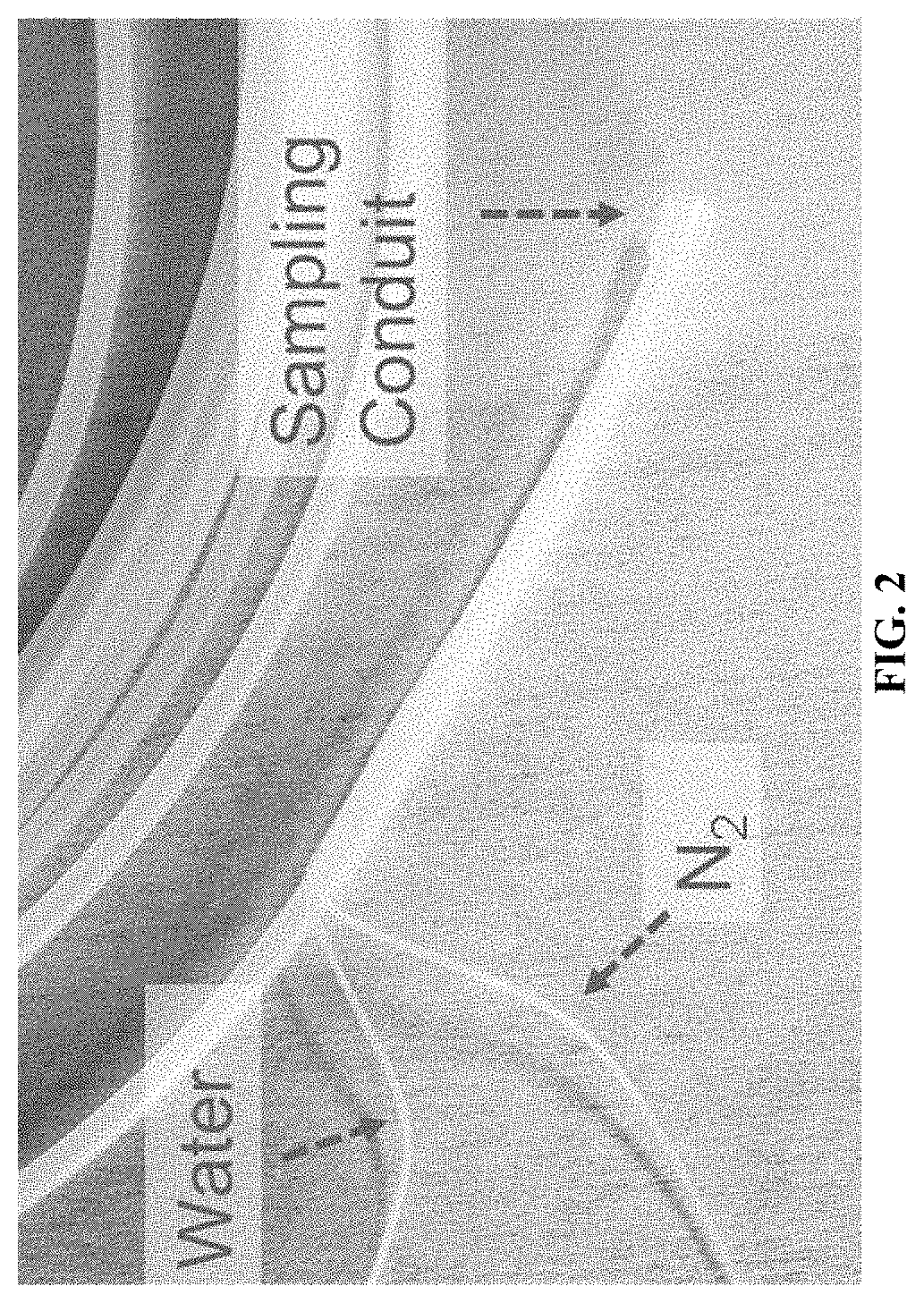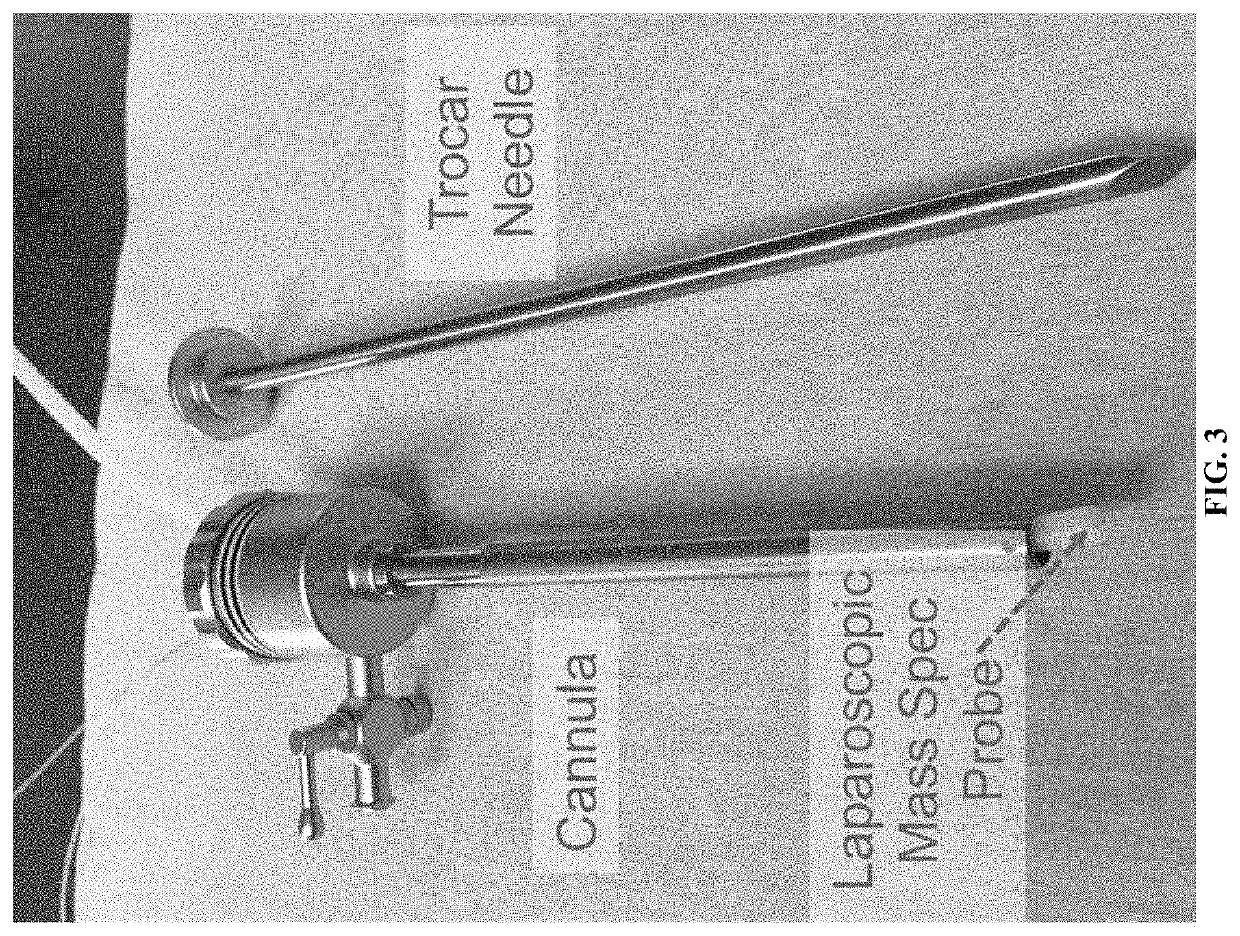Minimally invasive collection probe and methods for the use thereof
a collection probe and minimally invasive technology, applied in the field of medicine, molecular biology and biochemistry, can solve the problems of difficult recognition of certain tumor cells, unreliable and subjective analysis, and many challenges, and achieve the effect of easy identification, easy reading and removal
- Summary
- Abstract
- Description
- Claims
- Application Information
AI Technical Summary
Benefits of technology
Problems solved by technology
Method used
Image
Examples
example 1
Minimally Invasive Probe for Mass Spectrometry Design
[0102]The system developed consists of three main parts: 1) a syringe pump that is programmed to deliver a discrete solvent volume using a controlled flow rate; 2) tubing systems integrated to two-way pinch valves for controlled solvent and gas transport; 3) a probe tip which is used for direct sampling of biological tissues. The tubing systems and probe tip are also integrated into a minimally invasive surgical device such as a cannula or catheter for use in laparoscopic or endoscopic surgeries. Several iterations of the system were explored and optimized with the ultimate goal of minimizing tissue damage, maximizing tissue-analyte extraction, and maximizing solvent transmission to the mass spectrometer. FIG. 1 shows a schematic figure of one example of a minimally invasive apparatus for analyzing biological tissue. The syringe pump feeds solvent and gas into the minimally invasive probe via micro-PTFE tubing. The probe maintains...
example 2
Molecular Profiles and Analysis
[0105]The system described herein operates by directly connecting the transfer tube to the mass spectrometer inlet for transporting the analyte-containing solvents to the mass spectrometer for molecular analysis. This set up greatly simplifies operational details and precludes the use of ionization sources. After the probe interacts with the tissue, the solvent is then transported to the mass spectrometer and directly infused without the need of an additional ionization source. Since the system is fully automated so that each 10 μL solvent droplet is delivered separately to the inlet, the mass spectrometer operates without any impact on its performance. Rich molecular information is obtained in this manner, similar to what is observed from other solvent-extraction ambient ionization techniques such as desorption electrospray ionization. The ionization mechanism may be similar to inlet ionization. For inlet ionization methods, the ionization occurs in t...
example 3
System Automation for Handheld and Laparoscopic Use
[0116]Because all the materials (PDMS and PTFE) and solvent (only water) used in the minimally invasive probe design are biologically compatible, the system has a high potential to be used in laparoscopic and endoscopic surgeries for real-time analysis. More than that, due to the small dimension of the device, it can be integrated to a robotic surgical system, such as the Da Vinci surgical system, through an accessory port or one of its robotic arms. Several regions of the human body cavity can be quickly sampled during surgery with or without wash / flush steps in between each analysis, and analyzed by using a database of molecular signatures and machine learning algorithms. Therefore, the diagnosing results may be provided in real time for each sampled region. This system can be broadly used in a wide variety of oncological and other surgical interventions (such as endometriosis) for which real-time characterization and diagnosis of...
PUM
 Login to View More
Login to View More Abstract
Description
Claims
Application Information
 Login to View More
Login to View More - R&D
- Intellectual Property
- Life Sciences
- Materials
- Tech Scout
- Unparalleled Data Quality
- Higher Quality Content
- 60% Fewer Hallucinations
Browse by: Latest US Patents, China's latest patents, Technical Efficacy Thesaurus, Application Domain, Technology Topic, Popular Technical Reports.
© 2025 PatSnap. All rights reserved.Legal|Privacy policy|Modern Slavery Act Transparency Statement|Sitemap|About US| Contact US: help@patsnap.com



